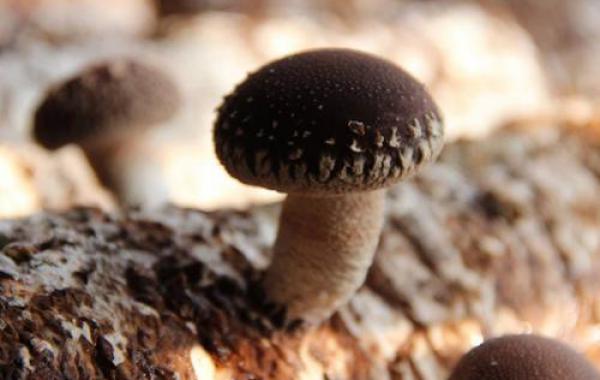How to effectively control diseases and insect pests of edible fungi?

How to effectively control diseases and insect pests of edible fungi.
The harm of pests in the mushroom shed caused great obstacles to the development of edible fungi. In order to alleviate this contradiction, the main pests in mushroom shed and their control methods are introduced.
1. Mushroom fly
The larvae, also known as maggots, mainly feed on the fruiting body to cause tunnels and affect the quality, and the wound is also easy to be infected by bacteria and rot. Different methods should be used to control mushroom flies in different periods. There are a large number of maggots in front of this mushroom, which can be fumigated with dichlorvos at the amount of 0.90 kg / 100 square meters, while 0.15 kg of 1% potassium chloride or sodium chloride solution is sprayed on each culture block (which can be replaced by 5% salt water). After mushroom, maggots can be sprayed with low-toxic pesticides such as fish rattan essence, pyrethroid, nicotine and so on. Nicotine can be self-made: take 0.50 kg of tobacco stem, add 5 kg of water to boil and spray the solution. In addition, ventilation should be strengthened and the temperature and humidity in the shed should be adjusted to worsen the living environment of pests and achieve the purpose of preventing and controlling the pests.
2. Mushroom mosquito
Mushroom mosquitoes are the most harmful in the larval stage. In addition to eating on the surface of the culture material, some of them form a net to cover the mushroom buds, so that the mushroom body can not grow normally. Prevention and control method: after harvest, the trichlorfon is sprayed 800 times by 500mur. at the same time, nylon gauze should be added at the door and window of the mushroom shed to prevent adults from flying in to lay eggs and reproduce.
3. Bacterial lice
It is a kind of mites with small individuals and fast crawling. it mainly feeds on fruiting bodies and hyphae. When preventing and controlling, we should first stop the insect source from invading the mushroom shed, because it mainly comes from all kinds of feed in the warehouse and feed room, so when using the warehouse and chicken house as the culture room, we should thoroughly disinfect it, brush the wall with lime, and fumigate with dichlorvos once before use. During the culture period, it was found that the lice could be fumigated with 50% dichlorvos with cotton balls or sprayed with 1% nicotine sulfate solution, or fishy things such as pig bones could be sprayed with pesticides such as parathion and placed near the culture block to lure the lice up. Then take it out and burn it or burn it to death with boiling water.
4. Nematodes
Nematodes are small colorless worms that are only about 1 mm in size. The larvae invaded the mycelium and fruiting body, and the cap blackened at first, and then the whole fruiting body blackened and rotted and smelled moldy. Prevention and treatment: steam should be fully contacted with the culture material when steaming to kill all nematodes. After mushroom emergence, 50 mg / kg zinc sulfide can be sprayed with culture blocks to prevent and control the damage.
5. Jumpers
Also known as ash bug. It has a flexible tail, bounces freely, has a waxy body and is not afraid of water. Often distributed on the surface of the mushroom bed or in damp dark places to bite the fruiting body. Before mushroom emergence, dichlorvos can be trapped with 1000 times of dichlorvos and a small amount of honey. Or apply arsenite preparation or organophosphorus preparation to sweet potato slices for trapping and killing. In general, pesticides can not be used directly after mushroom emergence, at this time, 0.25ml fresh orange peel can be cut into pieces, wrapped with gauze to extract juice, and then sprayed with 0.50kg lukewarm water at 1:20 for 3 times. the effective rate of preventing jumping insects is more than 90%.
6. Slugs
Commonly known as Snotlout, it is a mollusk with a naked body and no shell. They are afraid of light and heat, hide under bricks, stones and soil cracks during the day, come out one after another after dusk to feed, and hide again before dawn. Prevention and control methods: Rice bran or bean cake added 2% calcium arsenate or aluminum arsenate to make poison bait, or 15 Mel 20 times sodium chloride solution can be sprayed on the ground to dispel adults. 9: 00 p. M.-10: 00 p. M. is their concentrated activity period, when manual capture can be carried out.
7. Thrips
The adult is black, small, slightly flattened, with protruding compound eyes and orange-red nymphs. It mainly absorbs bacterial juice, which can lead to bacterial atrophy in severe cases. Prevention and control method: spray with 40% dimethoate emulsion 1500 murine 2000 times, or 90% trichlorfon and 50% malathion 1000 murine 1500 times, and the control effect can reach 80% Mui 90%.
8. Mole cricket
The best effect is to use poison bait. Its formula is 50 grams of trichlorfon, 1500 grams of rice bran or wheat bran, 50g sugar, 250mg white vinegar and sprinkled on the ground. Mole cricket and mosquitoes die immediately after eating.
9. Other pests
Pseudo-walker, borer, potassium sibanli, etc., can be sprayed with 500 murmuri 800 times of rotenin or 1500 times of 80% dichlorvos 1000 Murray 1500 times can achieve better control effect. Termites are a major pest in the south, which mainly harms Fuling and other fungi. Digging nests to kill ants is an effective way to avoid or reduce the damage caused by termites. In addition, the method of stink tree branches can also be used to dig a small ditch around the mushroom shed, put the fresh Toona sinensis branches evenly in the ditch and cover them with soil, which has a strong repellent effect on termites.
Keep the mushroom farm clean. The mushroom room should be thoroughly cleaned before cultivation and evenly sprayed with 800 times of trichlorfon or dichlorvos solution (800 times 30% trichlorfon EC or 50% dichlorvos EC 800 times). To grow mushrooms outdoors, remove weeds around the cultivation site and spray soil and around the site with 250 times (30%) trichlorfon solution (EC).
Second, prevent adults from entering the house. For indoor cultivation, doors and windows, ventilation holes and so on should be nailed with 60-mesh fine yarn to prevent adults such as mushroom flies and mosquitoes from entering the room.
Third, drug fumigation. Edible fungi are cultivated indoors and fumigated with 3 pieces of aluminum phosphide per cubic meter of space under airtight conditions to eliminate indoor insect sources.
Fourth, deal with the culture material. Every 50 kg of culture material with (20%) triclofenac 15 ml, 10 kg of water, evenly sprayed on the material, spray while mixing, spray and accumulate for 3 days, the source of insects (mites) can be eliminated, or 40% phoxim 500 times solution can be mixed in the culture material, which has a very good insecticidal effect.
Fifth, spraying to kill insects. When pests are found before mushroom emergence, the bed can be sprayed with 500x trichlorfon solution or 1000 times trichlorfon solution or 800x dichlorvos solution (EC).
- Prev

What are the benefits of edible fungi in medicinal health care?
What are the benefits of edible fungi in medicinal health care?
- Next

How to prevent and cure edible fungus diseases? Wonderful measures for Prevention and Control of Edible Mushroom Diseases
How to prevent and cure edible fungus diseases? Wonderful measures for Prevention and Control of Edible Mushroom Diseases
Related
- Fuxing push coffee new agricultural production and marketing class: lack of small-scale processing plants
- Jujube rice field leisure farm deep ploughing Yilan for five years to create a space for organic food and play
- Nongyu Farm-A trial of organic papaya for brave women with advanced technology
- Four points for attention in the prevention and control of diseases and insect pests of edible fungi
- How to add nutrient solution to Edible Fungi
- Is there any good way to control edible fungus mites?
- Open Inoculation Technology of Edible Fungi
- Is there any clever way to use fertilizer for edible fungus in winter?
- What agents are used to kill the pathogens of edible fungi in the mushroom shed?
- Rapid drying of Edible Fungi

